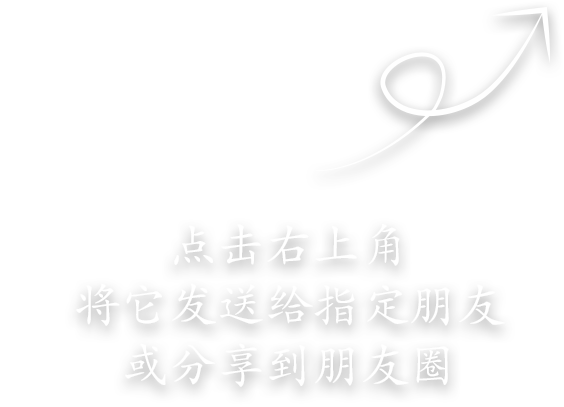Analysis of Core Components Technology for High-End Semiconductor Manufacturing Equipment: From Air-Floating Rotating Shaft to Wafer Calibrator
In the semiconductor manufacturing field, the precise handling and positioning of wafers are the core steps to ensure the yield of chips. As the manufacturing process progresses towards nodes of 3nm and below, there are increasingly stringent requirements for the precision, stability, and cleanliness of equipment components. This article will deeply analyze the five key components: the air-floating rotating shaft, ceramic fork, wafer handling manipulator, precision motion platform, and wafer calibrator, revealing their technical principles and innovative directions.
1. Air-float rotating shaft: Breaking through the precision limit with "no contact"
Technical essence: The air-float rotating shaft creates a dynamic air film between the shaft and the bearing through high-pressure gas, achieving "zero contact" support and rotation. This non-contact design fundamentally eliminates mechanical friction and wear, providing a fundamental guarantee for ultra-precise motion.
Core parameters:
Rotation accuracy: ≤ ±0.05 μm (in accordance with ISO standards)
Axial/radial runout: < 0.1 μm (across the entire speed range)
Speed range: 0.1 - 1500 rpm (continuously adjustable)
Air film stiffness: ≥ 50 N/μm (ensuring anti-interference capability)
Innovative direction:
Applications of porous materials: Use sintered porous metals (such as bronze-based) as throttling devices to achieve uniform gas flow distribution and reduce vortex noise.
Active vibration suppression technology: Integrate piezoelectric ceramic sensors with microfluidic controllers to detect and compensate for rotor vibrations (frequency range 0-5 kHz) in real time.
Gas circulation purification: Configure HEPA filters (with a filtration efficiency of 99.999% at 0.3 μm) and a temperature and humidity control system to ensure the cleanliness of the gas source reaches Class 1 (ISO 14644-1).
Application scenarios: Alignment module of lithography machines, rotating chambers of thin film deposition equipment, and laser welding stations of wafer-level packaging.
II. Ceramic Plate Fork: The Perfect Fusion of Materials Science and Mechanics
Structural Design:
Material selection: Nitride aluminum (AlN) or silicon carbide (SiC) ceramics, featuring high hardness (Mohs hardness 9), low thermal expansion coefficient (AlN: 4.5×10⁻⁶/℃) and excellent insulation properties.
Shaft structure: A thin-walled hollow structure designed using topology optimization algorithm, reducing weight by 30%-40% while maintaining stiffness.
Key technical indicators:
Static bearing capacity: ≥ 5kg (center loading)
Dynamic response frequency: > 200Hz (avoid resonance with handling rhythm)
Surface roughness: Ra < 0.02μm (prevent wafer scratching)
Thermal conductivity: AlN > 170W/(m·K), SiC > 120W/(m·K) (rapid heat dissipation)
Process breakthroughs:
Injection molding + HIP sintering: Complex-shaped blanks are fabricated through powder injection molding (PIM), and combined with hot isostatic pressing (HIP) sintering (at a temperature of 1800°C and a pressure of 150 MPa), the density is enhanced to over 99.5%.
Nanocoating protection: Diamond-like carbon films (DLC) are sputtered on the contact surfaces to reduce the friction coefficient to below 0.1, while enhancing corrosion resistance.
Typical applications: Edge clamping and handling of wafers, rotating coating mechanism of photomask coating machines, and heat-resistant clamps for high-temperature process equipment.
III. Wafer Handling Manipulator: A Precise Execution Terminal with Multi-Degree-of-Freedom Coordinated Control
System Architecture:
Motion degrees of freedom: Usually, a 4-6 axis design (X/Y/Z linear axes + A/B rotational axes) is adopted. Some high-end models are equipped with redundant degrees of freedom to avoid obstacles.
Drive method: Linear axes use voice coil motors (VCM) or linear motor with permanent magnet synchronous motor (PMLSM), and rotational axes use direct drive motors (DDM).
Core performance:
Repeatability positioning accuracy: ±0.01mm (for the entire travel)
Maximum handling speed: 1.5m/s (acceleration ≥ 5g)
Wafer compatibility size: 6 - 300mm (supports fragment detection and automatic adjustment)
Vacuum suction force: 0.5 - 5N adjustable (suitable for different thicknesses of wafers)
Intelligent upgrade:
Visual servo positioning: Integrating high frame rate (>100fps) industrial cameras with deep learning algorithms, achieving sub-pixel-level wafer edge recognition (error < 5μm).
Force feedback control: Equipping the end effector with a six-dimensional force sensor (range ±10N, resolution 0.01N), real-time monitoring of contact force and adjustment of grasping posture.
Autonomous navigation and obstacle avoidance: Based on LiDAR and UWB positioning technology, constructing a dynamic map and planning safe paths.
Application expansion: Crane docking in AMHS (Automatic Material Handling System), dual-table exchange of lithography machines (EFEM), wafer transportation in chemical mechanical polishing (CMP).
IV. Precision Motion Platform: The "Musculoskeletal System" with Nanometer-Level Positioning
Design Challenge:
Thermal deformation control: Temperature drift coefficient < 0.1 μm/℃ (temperature fluctuation in the working environment ± 1℃)
Anti-vibration performance: Capable of withstanding impact loads with frequency > 1 kHz and acceleration > 10 g
Electromagnetic compatibility: Radiated emission level < 50 dB μV/m (in compliance with SEMI F47 standard)
Key technical modules:
Guiding system: Cross roller guide rail (with adjustable preload) or air bearing guide rail (stiffness > 100N/μm)
Drive mechanism: Linear motor + ball screw compound drive (resolution up to 0.1nm)
Position detection: Dual-frequency laser interferometer (measurement range ±50mm, accuracy ±0.5ppm) or capacitive displacement sensor (resolution 0.001μm)
Innovative case:
Magnetic levitation motion platform: Utilizing a permanent magnet array and electromagnetic coils to generate repulsive force for support, enabling frictionless movement (stiffness > 200N/μm, moving speed > 5m/s).
Flexible hinge mechanism: Employing a micro-displacement amplifier made of shape memory alloy (SMA), with a stroke of ±1mm and a resolution of <1nm.
Typical indicators: X/Y axis positioning accuracy ±0.5μm (3σ), Z axis repeat positioning accuracy ±0.1μm, rotational axis deflection <0.005°.
V. Wafer Calibrator: The Final Line of Defense for Alignment Accuracy
Functional Requirements:
Position calibration: X/Y direction deviation < ±0.5 μm, θ angle deviation < 0.001°
Flatness correction: Warpage compensation range ±50 μm (suitable for deformation caused by different processes)
Speed matching: Calibration cycle < 3s (satisfies high-speed production rhythm)
Core components:
Visual system: High-resolution (≥5μm/pixel) color camera + ring light source, supporting combined bright-field/dark-field illumination mode.
Drive mechanism: Piezoelectric ceramic micro-motion platform (travel ±100μm, resolution 0.1nm) or voice coil motor (travel ±5mm, acceleration >2g).
Algorithm model: Image registration algorithm based on machine learning (such as SIFT+SVM), capable of identifying minute deformations and stain interference of wafer markings.
Process adaptation:
Lithography alignment: Supports dual-face alignment (DSA) and infrared transmission alignment (IR Align), meeting the alignment accuracy requirements for different layers.
Etching/Coating calibration: Integrates plasma sensors and optical interferometers to monitor the surface state of the wafer in real time and dynamically adjust the position.
Conclusion
From the "zero-friction" movement of the air-float rotating shaft to the precise clamping of the ceramic disc fork, from the intelligent handling of the robotic arm to the nanometer-level positioning of the motion platform, and finally to the ultimate precision correction of the calibrator, each component is the most precious gem on the crown of semiconductor manufacturing equipment. With continuous breakthroughs in new materials, artificial intelligence, and advanced manufacturing processes, the performance boundaries of these core components will be continuously expanded, providing stronger support for the next generation of chip manufacturing. In the future, interdisciplinary integration (such as quantum sensing + micro-nano processing) and green manufacturing concepts (low-energy design) will become new engines driving the development of this field.






Please first Loginlater ~